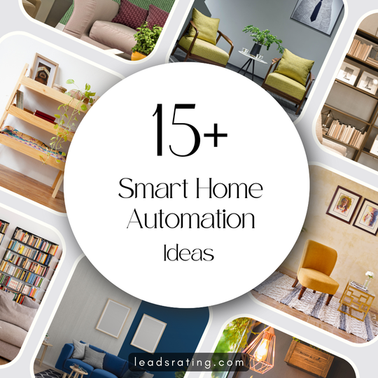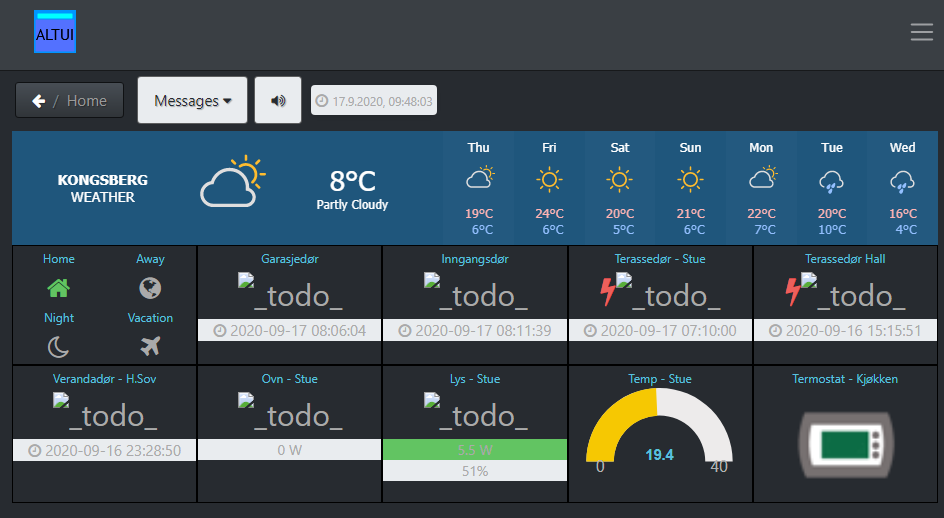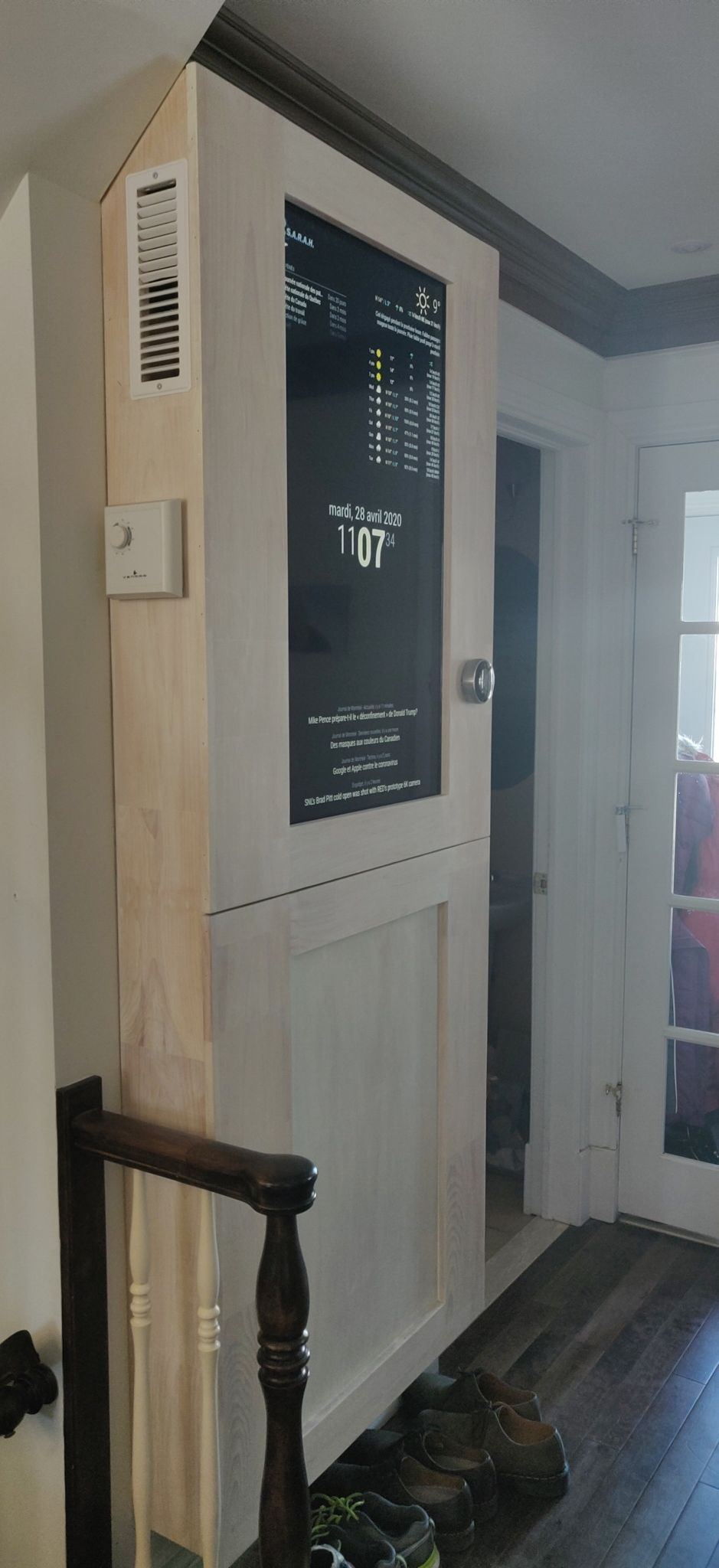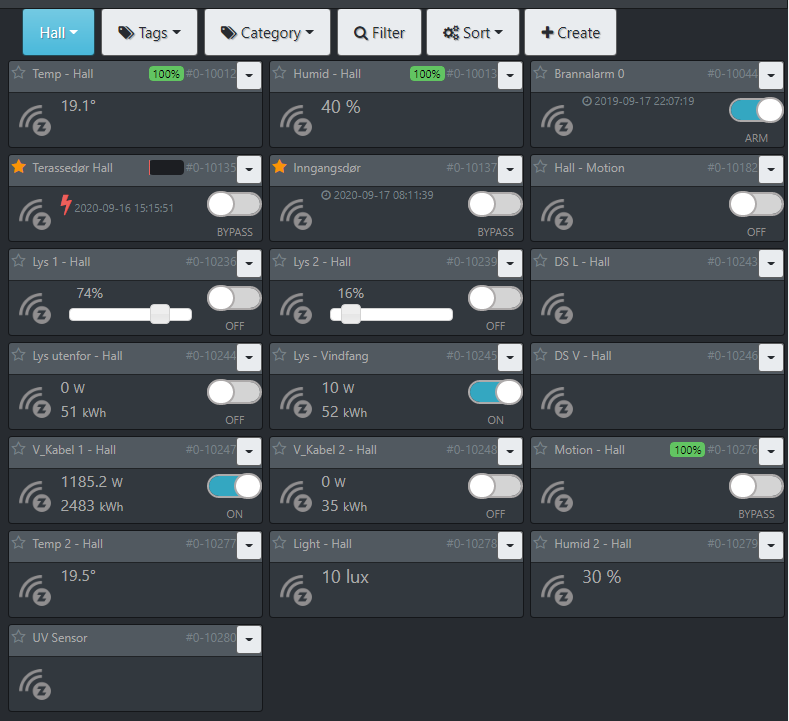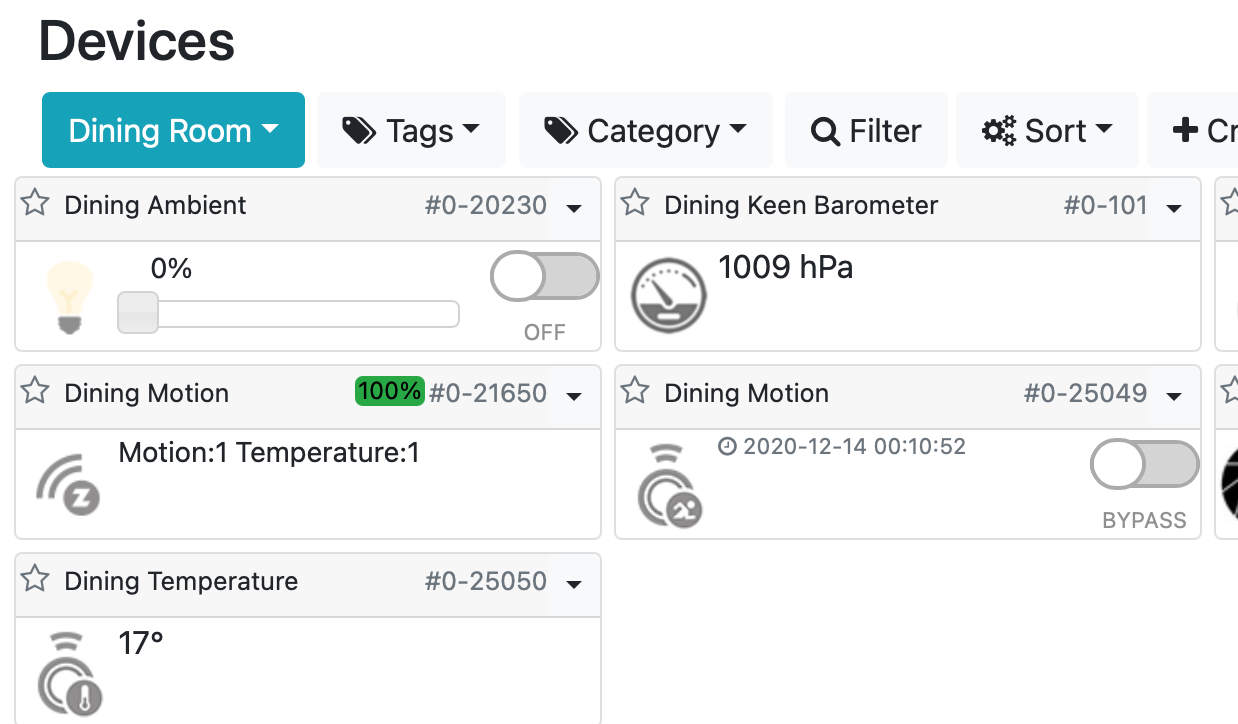Another transition from Vera to OpenLuup And now to HASS - PerH
-
After some hours of fiddling with my little breakdown, I finally got the Zigate plugin up and running. And its running well! the two aqara sensors i tried popped up and configured perfectly at first attempt.
I now have zigbee capability outside the vera, the last thing i need to power down the vera now is geofencing.

-
One new thing i discovered with the Zigate was that the Aqara temp sensors also report air pressure. A new Barometer definition followed the plugin.

MIOS doesn't have a device catergory for this, anyone here solve that issue? I can't make Imperihome show them without device categories..
Today AltUI gave a pop-up with the single word "Fail.", and my lisence isn't registered. I've recently changed to a new router, could that be related?
-
One new thing i discovered with the Zigate was that the Aqara temp sensors also report air pressure. A new Barometer definition followed the plugin.

MIOS doesn't have a device catergory for this, anyone here solve that issue? I can't make Imperihome show them without device categories..
Today AltUI gave a pop-up with the single word "Fail.", and my lisence isn't registered. I've recently changed to a new router, could that be related?
@perh said in Another transition from Vera to OpenLuup - PerH:
MIOS doesn't have a device catergory for this, anyone here solve that issue? I can't make Imperihome show them without device categories..
Just use weather station. I have a couple of virtual devices and I’ll probably share them in the near future. Just a custom device Template with standard generic level sensor attached.
-
One new thing i discovered with the Zigate was that the Aqara temp sensors also report air pressure. A new Barometer definition followed the plugin.

MIOS doesn't have a device catergory for this, anyone here solve that issue? I can't make Imperihome show them without device categories..
Today AltUI gave a pop-up with the single word "Fail.", and my lisence isn't registered. I've recently changed to a new router, could that be related?
@perh said in Another transition from Vera to OpenLuup - PerH:
MIOS doesn't have a device catergory for this, anyone here solve that issue? I can't make Imperihome show them without device categories..
I have long rolled my own pressure sensor/barometer category icon and type which vera doesn't support even at the command class level. Mine also is due to a zigbee device. Maybe I should push it to the ALTUI repo huh?
Today AltUI gave a pop-up with the single word "Fail.", and my lisence isn't registered. I've recently changed to a new router, could that be related?
It is possible. Unless you make it run on local cdn, ALTUI relies heavily on java libraries from the internet.
-
Definitely some weird stuff going on either on your network or in the web. When you get a chance to look at it, I would definitely recommend moving to local cdn. I pushed a bunch of updates to @amg0's repo on GitHub last week and he also updated their web version. You should see them on the next release.
-
I know there is some issue with the LAN, as I just changed routers.. Ubiquiti Edgerouter X setup needs a higher level of network knowledge than I have, so i have a thread on the ubiquiti forum.

Local CDN sounds interesting, what is it? i asumed AltUI is looking to a lisence server?
-
Rather than paraphrasing, look at the first file here:
In short, ALTUI is very dependent on your network connection. You can localize almost every call it makes for these cdn which are files/tools needed by the browser to display the UI. Localizing them enables you to not rely on these servers but to run the whole thing off of your openLuup/ALTUI server. It is much faster when open locally but relies on your home internet connection if you are logging in remotely. It still look for the license server but ALTUI still works for the most part even without a license...
-
Merry christmas ppl, I just have a question regarding "nonce reports".. I noticed that theres a huge amount of them in the zniffer history, like 100 request/report messages to one device in just 1.5 hours?? Can that be necessary?
Notice that this is just sent from controller to one device..
I have a reactor that controls all common area lights, and have seen that some lights don't react to it some times.. not surprised if there's constant flows of nonce reports all the time?
-
-
I deleted your double post... Yeah not sure what is going on and what setting could possibly cause this. Maybe try power cycling the switch to see if it goes away? It seems to be stuck somehow.
One other thing to look at is whether you have a scene somewhere trying to send commands to this device at a high frequency since I am seeing also a number of NONCE get calls issued by the controller. Something must be triggering it.
-
Looked through, and it looks like this is a common thing for all the mains powered units attached secure. a lot of "nonce activity"!
Here's a different fibaro unit:

I can't see why they would have so much back&forth with this, and i don't have any scenes at all, just reactors. And this seems to happen at a steady pace, there's not that automation going on here.

Can you show an example of this "nonce" message communication at your setup?
-
I basically see none of it unless a scene triggers them. I for example have an Aeotec HEM which is securely included and I see the exchange when it reports the values of the HEM. I see this also when I trigger a switch on and off or when I trigger a security sensor. It is always connected to an action. Is it always the same type of device?
-
I finally made the Domoticz link work, and then ported all Zigbee devices to the much better zigate plugin there. No change in latency at all, very sharp responses to door and motion sensors. Happy!

This plugin has its own GUI, and is almost structurally standalone. I've contacted the developers to ask if its possible with a direct API and to run it as a service to cut domoticz out of the chain..
I can now confirm that TRADFRI and Aqara will work together just fine, with repeaters helping for both systems:
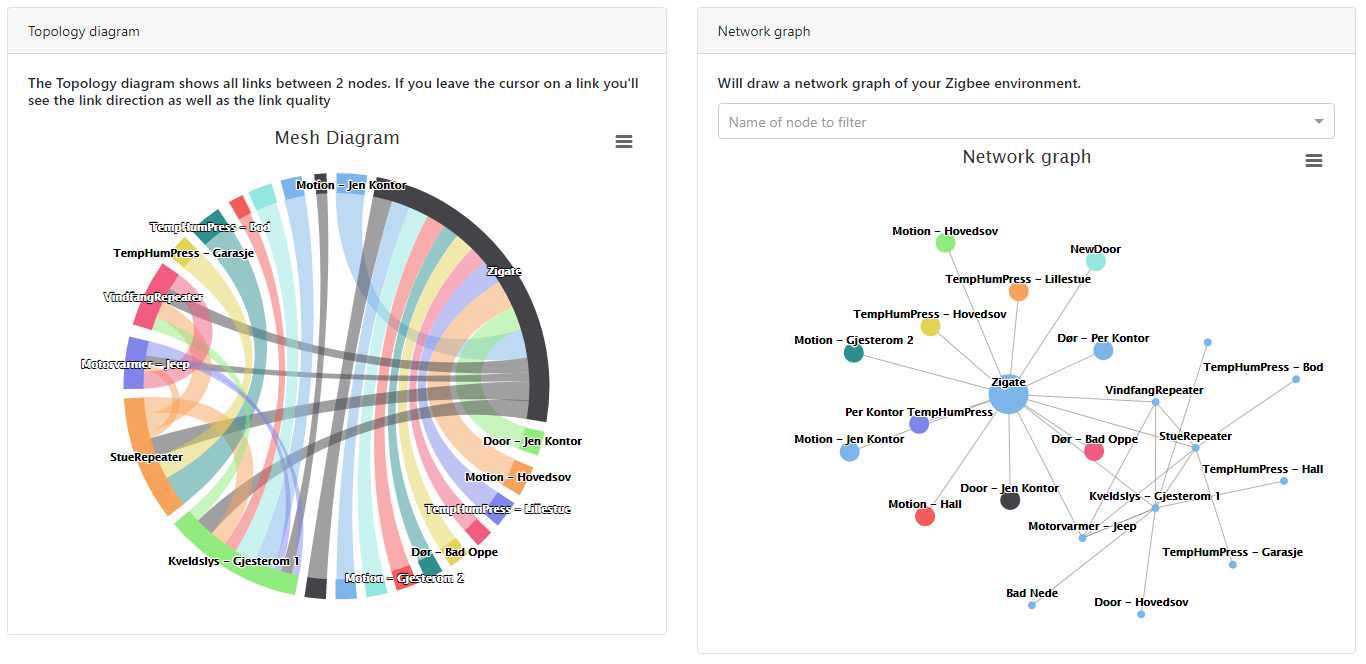
-
I have to applaud your resilience in finding yet a novel integration of zigbee into openLuup. I looked at it a while ago for just a few minutes before giving up with the thought that the plugin was broken and moved on to something else.
In many ways I envy your integration. I came to realize that I had mentally split my setup into 2 major controller categories:
The local, z-wave and zigbee which needed to be stable, fast and 100% reliable, almost never requiring any updates.
The cloud side which I tried to minimize to the very essential and would constantly require updates due to cloud APIs changing.
I partially failed by running my zigbee on home assistant which also is my cloud integration portal and is constantly getting updates. You just did exactly what I wanted to do... -
I finally made the Domoticz link work, and then ported all Zigbee devices to the much better zigate plugin there. No change in latency at all, very sharp responses to door and motion sensors. Happy!

This plugin has its own GUI, and is almost structurally standalone. I've contacted the developers to ask if its possible with a direct API and to run it as a service to cut domoticz out of the chain..
I can now confirm that TRADFRI and Aqara will work together just fine, with repeaters helping for both systems:

-
@therealdb: Yes, it would definately require some writing on the plugin, but then it would also open for more users.. we'll see!
There is some really good plugins and features in Domoticz as well, so its OK even if the plugin stays attached to it, as long as the performance stays good. Next plugin for me to install now is the Xiaomi Vacuum.

-
Finally starting to get the docker thing here, and currently i've got z-way 3.1.3, domoticz and miio-server (for the vacuum) running in dockers. Nice to se that there's no performance reduction with this either. I'd also like to get grafana and influxdb into dockers.
Plan now is to have some daily backup routine. I was thinking mabye just to have Reactor do
os.execute cp -rf <docker volume folder> <backup folder on SSD>sometime at night. Any thoughts?

